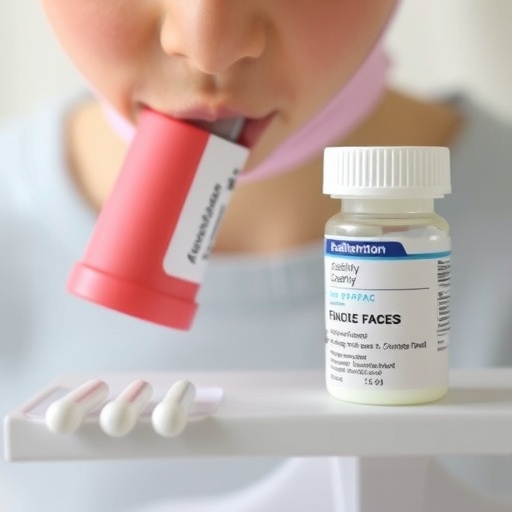The Lasting Imprint of Childhood Trauma: Unveiling Complex Patterns Behind Adult Substance Use and Psychological Struggles
Emerging research continues to unravel the intricate web connecting childhood adversity with adult mental health and behavioral outcomes. A pioneering study by Herberholz, Wolchok, Rogers, and colleagues, recently published in the International Journal of Mental Health and Addiction, breaks new ground by exploring how different latent classes of adverse childhood experiences (ACEs) relate to adult substance use problems and psychosocial functioning. This comprehensive investigation highlights the complexity and heterogeneity of these associations, challenging simplistic cause-and-effect models and shedding light on nuanced pathways from early trauma to adult difficulties.
Adverse childhood experiences have long been established as potent contributors to negative health and behavioral outcomes. However, prior investigations often treated ACEs as a cumulative score or examined isolated types of adversity without appreciating the underlying clustering patterns. This novel research utilizes latent class analysis to identify distinct subgroups of individuals who experience unique constellations of childhood adversity, thereby offering a more refined understanding of risk profiles. Importantly, the study demonstrates that these latent classes do not map neatly onto adult outcomes; rather, they reveal diverse pathways characterized by varying degrees of substance use and psychosocial impairment.
.adsslot_Noz4xbeWiT{width:728px !important;height:90px !important;}
@media(max-width:1199px){ .adsslot_Noz4xbeWiT{width:468px !important;height:60px !important;}
}
@media(max-width:767px){ .adsslot_Noz4xbeWiT{width:320px !important;height:50px !important;}
}
ADVERTISEMENT
The core methodology applied in this study—latent class analysis—is a sophisticated statistical tool that unearths hidden subpopulations within a larger dataset based on shared characteristics. By deploying this approach on robust ACEs data, the researchers categorized participants into discrete groups that reflect differing combinations of childhood hardships such as abuse, neglect, household dysfunction, and other stressors. Identifying these latent classes enables a granular approach to exploring how specific patterns of childhood adversity differentially influence adult behavior, moving beyond the simplistic ‘more ACEs equals worse outcomes’ paradigm.
One striking revelation from the findings is the heterogeneity in adult substance use problems across ACE classes. Some latent classes characterized by high levels of household dysfunction but lower direct maltreatment displayed distinct substance use profiles compared to those exposed to severe physical or sexual abuse. This suggests that the nature of early adversity—not just its quantity—plays a critical role in shaping future substance-related behaviors. These nuanced insights may reorganize clinical perspectives on risk assessment, treatment personalization, and preventive interventions.
Moreover, the study explores adult psychosocial outcomes across these ACE-related latent classes, encompassing factors like mental health symptoms, social functioning, and life satisfaction. The variability discovered in these domains further emphasizes the complex interplay between early experiences and adult adaptation. Some subgroups with similar cumulative adversity exhibited markedly different psychosocial functioning, signifying moderating influences such as resilience factors, support systems, and coping mechanisms that mediate the trajectory from childhood trauma to adult well-being.
Another technical cornerstone of this research lies in its multidimensional analytic framework, integrating substance use patterns with psychosocial metrics. Rather than isolating one outcome, the simultaneous examination unearths latent profiles of co-occurring difficulties that paint a richer clinical picture. This multidomain lens reveals that substance use in adulthood rarely occurs in isolation but is embedded within broader psychosocial contexts uniquely shaped by the pattern of ACE exposure.
The implications of these findings ripple across several domains, particularly mental health practice and public policy. For clinicians, tailored treatment plans can be informed by recognizing which latent ACE class a patient belongs to, anticipating likely substance use challenges, and addressing psychosocial needs holistically. Meanwhile, policymakers stand to benefit by designing prevention programs that acknowledge the heterogeneous nature of childhood adversity and target at-risk subpopulations with specific intervention strategies rather than one-size-fits-all solutions.
Furthermore, the research underscores the imperative for longitudinal data to deepen our understanding of causality and temporal dynamics linking ACEs and adult outcomes. Although the latent classes provide a snapshot of adversity patterns, tracking individuals over time would elucidate how these patterns evolve and interact with intervening factors. Such temporal insight is crucial for identifying critical periods for intervention and enhancing the effectiveness of early support systems.
Importantly, the study reflects a growing recognition of the need for intersectional analyses. The data highlight that sociodemographic variables like gender, ethnicity, and socioeconomic status intersect with ACE latent classes to modulate substance use and psychosocial trajectories. These intersections complicate the landscape of adversity and recovery, mandating culturally sensitive approaches and awareness of systemic inequalities in mental health research and practice.
From a neuroscientific perspective, these findings resonate with emerging evidence about the varied neural impacts of different forms of childhood adversity. Distinct ACE patterns may correspond with divergent neurodevelopmental pathways influencing emotion regulation, impulse control, and reward processing—factors intimately linked to substance use vulnerability and mental health outcomes. Integrating psychobiological insights with latent class data promises a comprehensive mechanistic model explaining the multifaceted aftermath of childhood trauma.
The study’s reliance on robust statistical techniques also exemplifies the progressive advances in mental health research methods. Leveraging latent class analysis demonstrates the power of computational modeling to decode complex psychosocial phenomena, opening pathways for personalized medicine approaches. Future work may harness machine learning to further refine class definitions and predict individual risk profiles with greater accuracy.
Despite its strengths, the research acknowledges limitations needing exploration. For instance, reliance on self-reported ACE data can introduce recall bias, and cross-sectional designs constrain causal inferences. Addressing these concerns in future investigations through prospective designs and biologically validated ACE assessments will strengthen the evidence base and translational potential of findings.
In summary, the study by Herberholz and colleagues marks a significant stride in mental health research by decoding the intricate mosaic of childhood adversity and its adult repercussions. It challenges undifferentiated views of trauma exposure, illuminating distinct latent subgroups associated with diverse substance use and psychosocial outcomes. This nuanced understanding paves the way for precision interventions attuned to individual adversity histories, offering hope for mitigating the lifelong scars of early trauma.
As science continues to illuminate the shadowy pathways from childhood adversity to adult dysfunction, embracing complexity becomes essential. Policymakers, clinicians, and researchers alike must integrate these sophisticated insights into practice to break cycles of trauma and unlock resilient futures. The latent class framework introduced here sets a new research paradigm, promising more targeted, effective, and humane responses to one of the most pressing public health challenges of our era.
Subject of Research: Patterns of Adverse Childhood Experiences (ACEs) and their associations with adult substance use problems and psychosocial outcomes.
Article Title: Latent Classes of Adverse Childhood Experiences (ACEs) and Adult Substance-use Problems and Psychosocial Outcomes: Complex and Heterogeneous Associations
Article References:
Herberholz, E.S., Wolchok, R.E., Rogers, J.M. et al. Latent Classes of Adverse Childhood Experiences (ACEs) and Adult Substance-use Problems and Psychosocial Outcomes: Complex and Heterogeneous Associations. Int J Ment Health Addiction (2025). https://doi.org/10.1007/s11469-025-01527-w
Tags: adverse childhood experiences and substance usechildhood trauma and adult mental healthcomplexity of childhood adversity outcomesheterogeneity of childhood experienceslatent class analysis of childhood adversitynovel research on childhood trauma and addictionnuanced pathways from trauma to adulthoodpsychological impacts of childhood traumapsychosocial functioning in adultsrisk profiles of childhood adversitysubstance use problems linked to ACEsunderstanding adult behavioral outcomes





